Land Stewardship
Designing and stewarding agro-ecosystems that sequester carbon, reverse desertification, support biodiversity, and produce abundant food for humans.
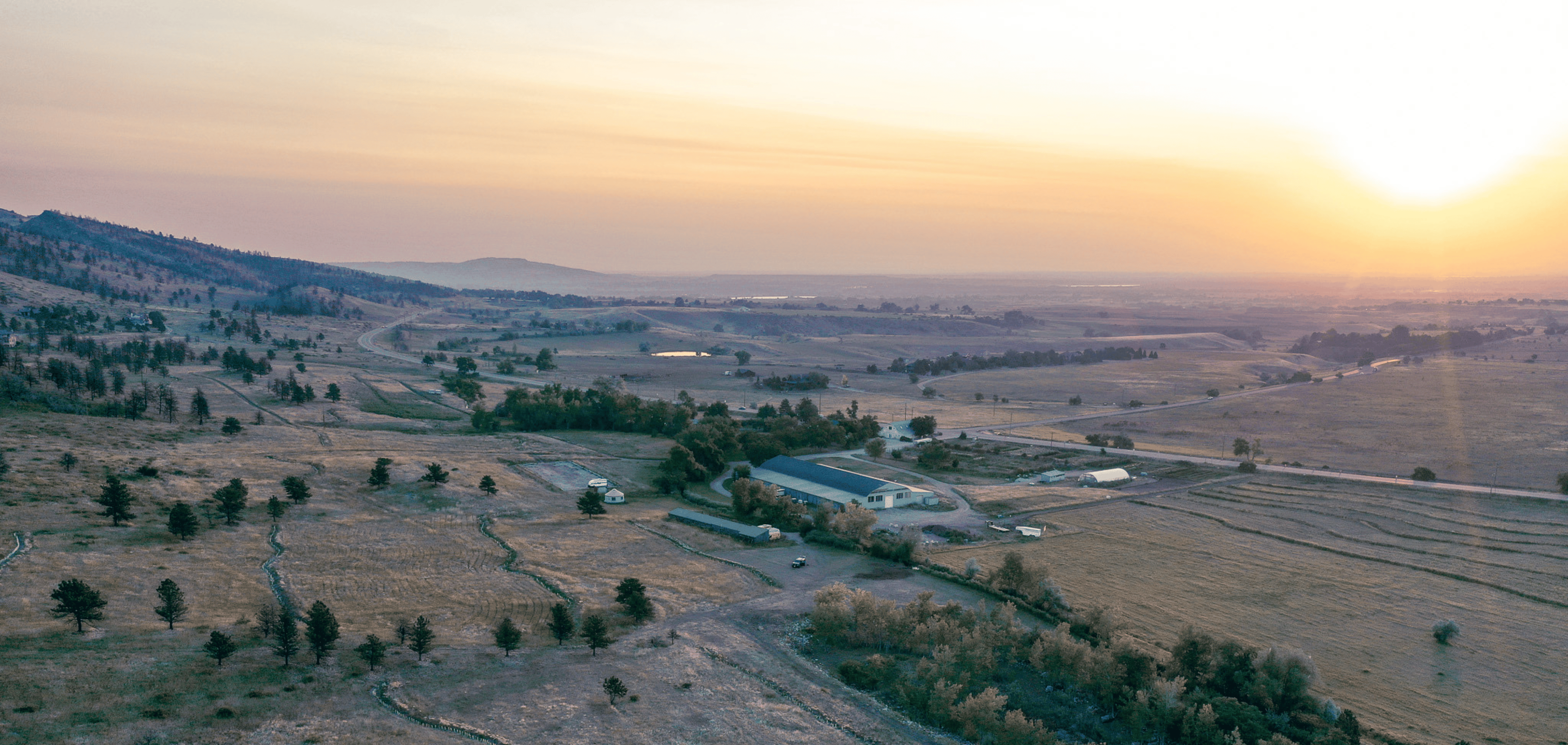
We design and install systems that regenerate your landscape back to a thriving state.
Our Methodology: Ecosystem Development
Modern societies face a critical ecological crisis, driven by unsustainable food systems and short-sighted resource extraction that ignore nature's balance, resulting in widespread ecosystem degradation. At DAR, we have found hope in regenerative design.
Regenerative Systems Design is grounded in the understanding that all human, ecological, agricultural, and economic systems are interconnected. DAR uses regenerative design to transform degraded landscapes into thriving, relationship-dense ecosystems that revitalize soil, restore hydrological cycles, sequester carbon, support biodiversity, provide abundant food and resources, and support thriving human culture and livelihood.
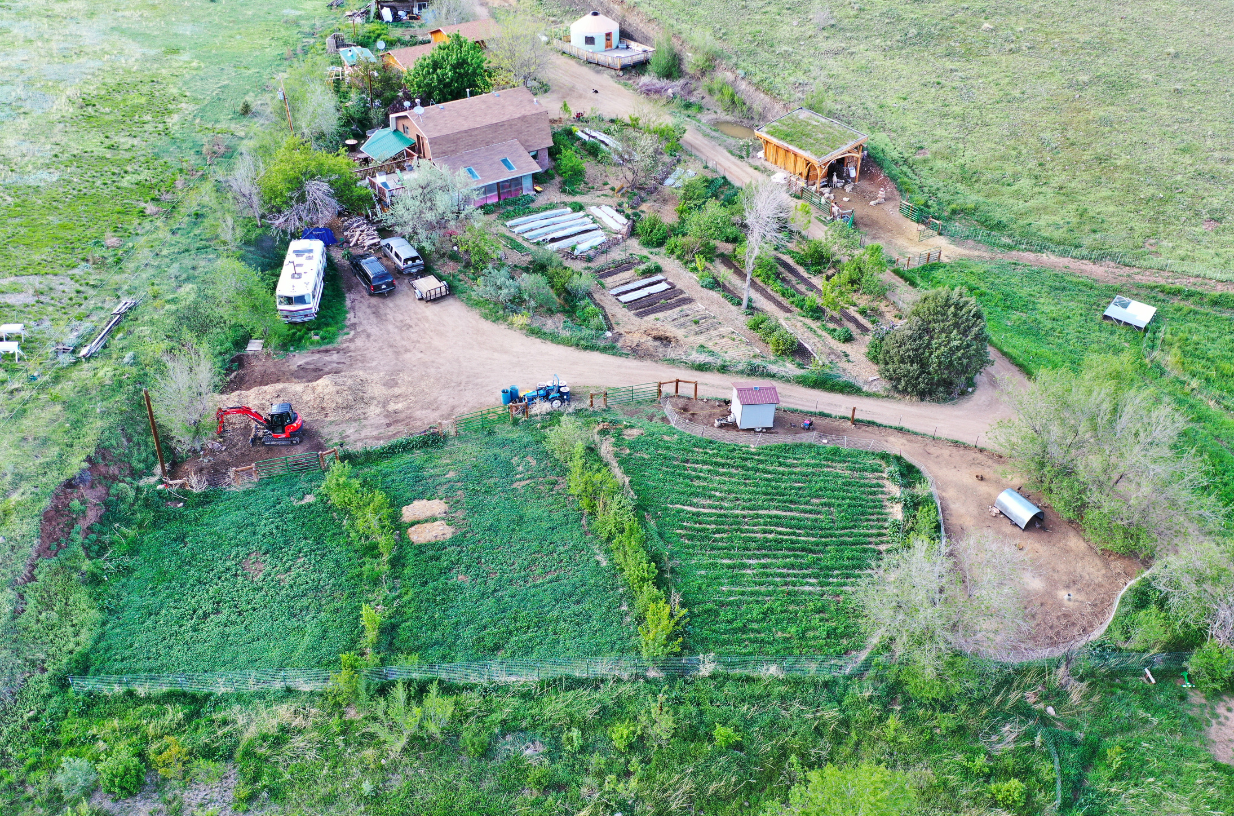
.webp)
DAR provides customized services ranging from Site Assessments to complete Master Plans and Phased Installations. Our offerings include water management, earthworks, agroforestry, holistic grazing plans, silvopasture, orchards, forest gardens, and more.
Regenerative Design Services
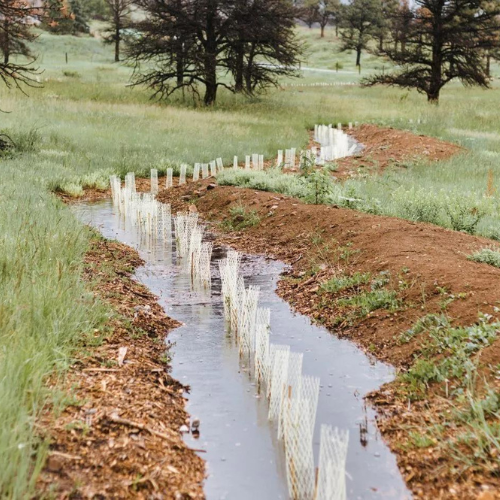
Water Management
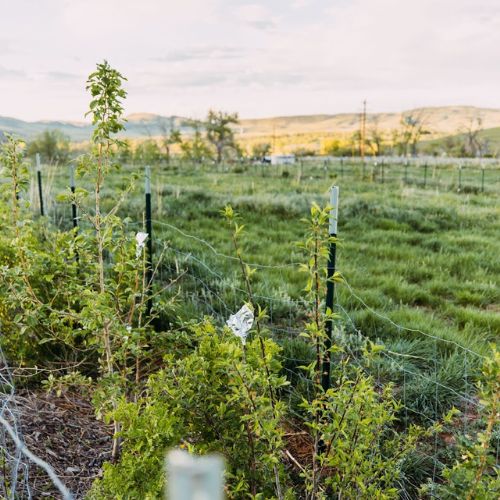
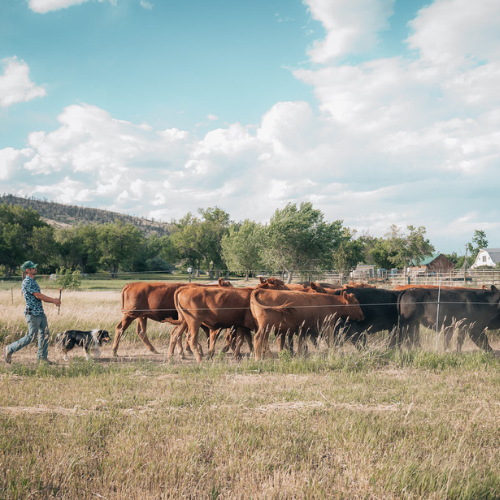
Grazing Management Planning
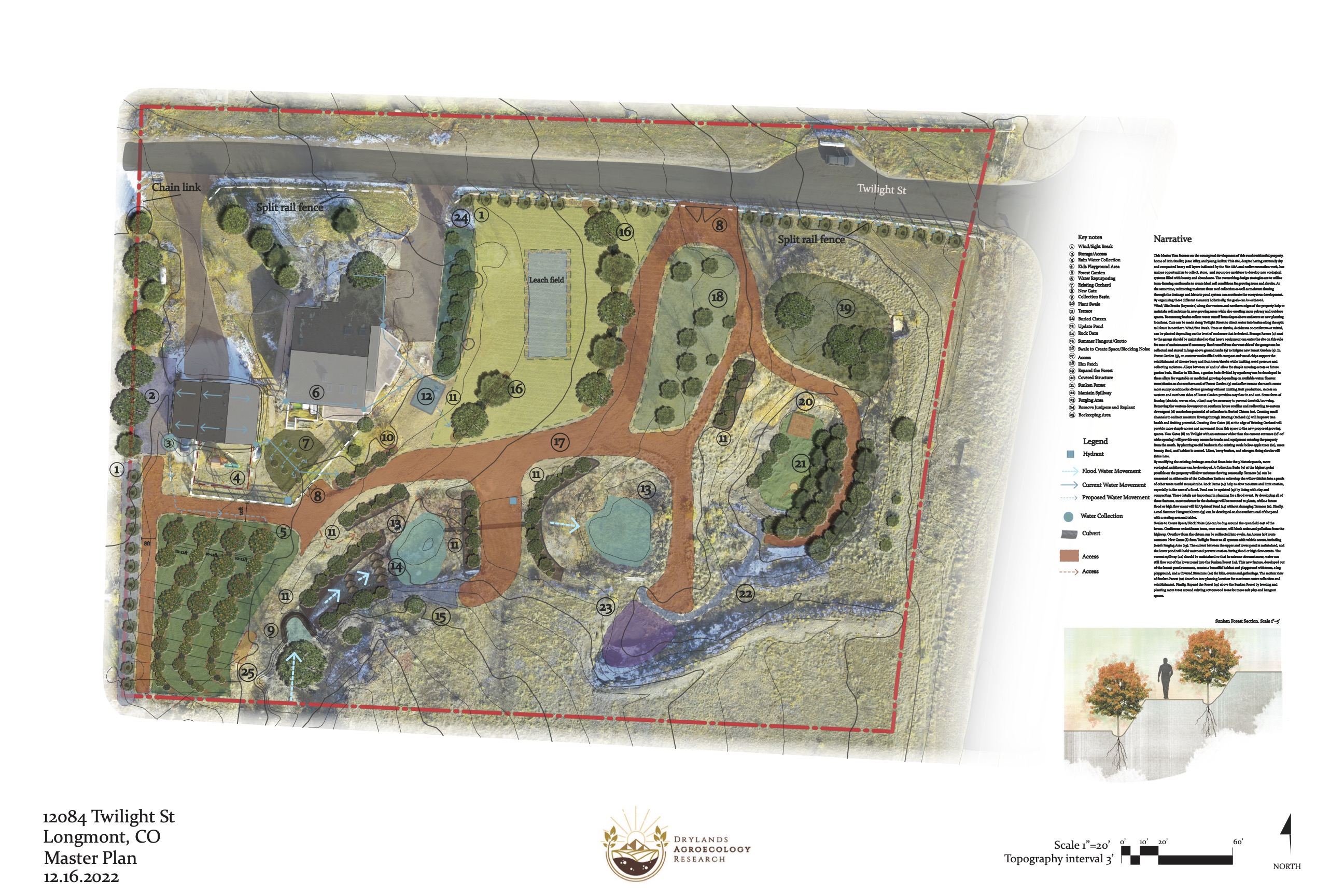
Site Analysis & Assessment
Agroforestry
Full Service ListTalk To A RepresentativeEffective Metrics That Help Accomplish Our Goals
Our research program tracks how effectively our landscapes sequester carbon, retain water, and support biodiversity. Click here to learn more.
.png)
Elk Run Farm
Pilot Research Project
In 2015, Nick DiDomenico set out to farm 14 deeply degraded acres in the foothills near Lyons, Colorado. There was only enough well water to irrigate less than an acre of de-vegetated property. When Nick reached out to the NRCS for advice on how to restore the land to a farmable state, they advised him to find another piece of land; without irrigation potential, there was no documented way to revitalize the land. From that moment, Elk Run Farm became a living experiment in how to restore deeply degraded land in a semi-arid climate without irrigation.
Today, through the dedication of Nick DiDomenico and Marissa Pulaski, Elk Run Farm is a thriving oasis in the high desert. Using passive water harvesting contour swales, 1000 trees and shrubs have been planted without irrigation, demonstrating a 79% survival rate across four years. What was a compact gravel parking lot is now five inches of rich topsoil that supports bioregional staple crops including blue corn, dry beans, amaranth, and grain sorghum.
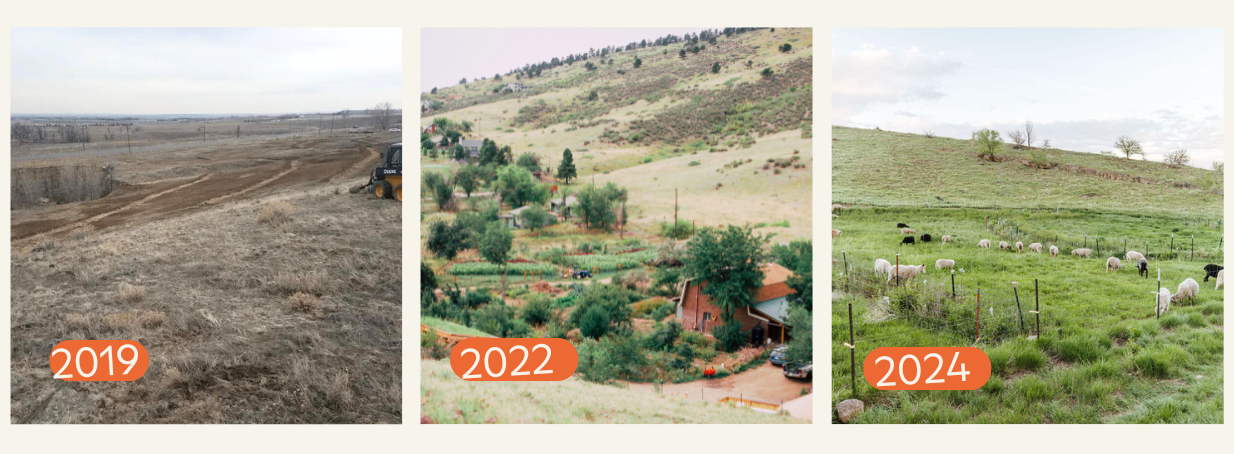
Yellow Barn Farm
Demonstration Site
Yellow Barn Farm's transformation from a horse event venue to a regeneratively managed ecosystem exemplifies patience, planning, and respect for nature. This shift began with an in-depth evaluation of the land, blending indigenous wisdom with contemporary scientific research to develop practices tailored to the Colorado high desert prairie. By mimicking natural patterns, the farm demonstrates how traditional knowledge and modern innovation can reverse desertification. Yellow Barn Farm faced severe desertification, losing topsoil to floods, fires, and wind, leading to a water cycle crisis that threatened the land's vitality. DAR's interventions aimed to halt these destructive processes by improving water, soil, and animal management strategies. Addressing these challenges required a comprehensive approach to restore ecological balance and resilience.
We started by "planting the water," using swales and Keyline Design to capture and retain water, allowing it to infiltrate and rejuvenate the soil. Next, we introduced nitrogen-fixing trees and drought-tolerant cover crops to enrich the soil. Rotational grazing with chickens, cattle, and pigs promoted nutrient cycling and soil health. As a result, the farm now shows improved soil structure, increased biodiversity, effective water management, and visible signs of desertification reversal.
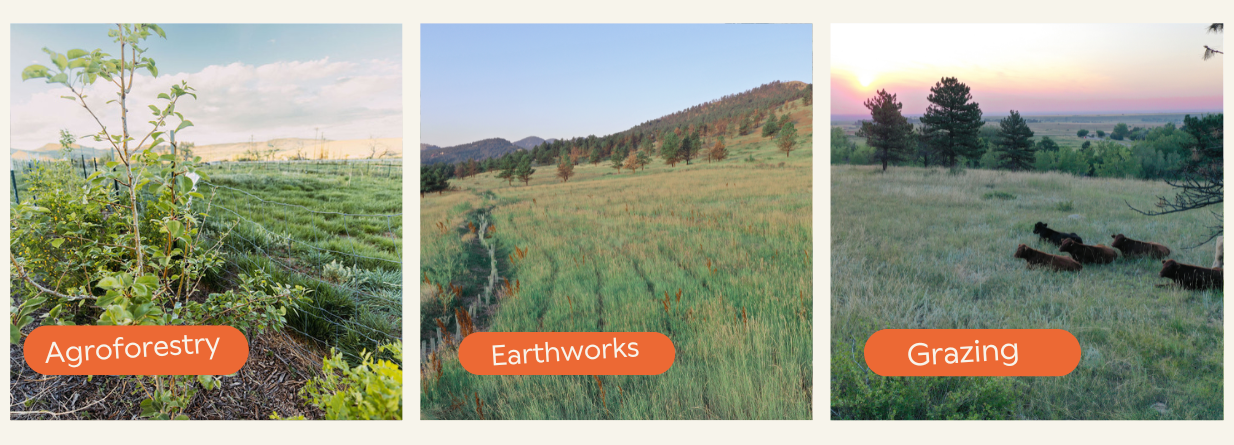
Land Stewardship Process
Before a shovel ever touches soil, every project goes through a rigorous holistic land stewardship process. The outcome? A clear picture of where we’re going, how we’re going to get there, and why.
Clarifying goals is the beginning and arguably most important part of the land stewardship process. Together, we establish the vision of where we want to be and what we want to see in the years to come.
With our vision clear, we turn to the land. Our site assessment process gives us - and you - a holistic understanding of the land; what elements and resources are present and how this relates to the goals. This process unearths the characteristics of the land, including the flow of resources, challenges, and opportunities.
With a holistic understanding of how the characteristics of the land and the goals of the people intersect, we create a design that maximizes the regenerative potential of your site. This design is complete, from master plan, to detailed systems diagrams, to implementation strategies and timelines.
With an approved design in hand, we can move forward with implementation. Using the latest equipment and a deep knowledge of ecology, our experienced team will shape the land and fortify the soil, preparing it to harbor new life. With this infrastructure in place we turn to planting. For many clients, our tree planting events are a fun and popular way to invite community onto the land and share the important restoration work they’re doing!
For DAR, a project is never truly finished. Tracking the outcomes of our efforts takes years as ecosystems grow and evolve. All along that way, we are there, collecting data to make sure every design turns out as intended and making the little shifts needed to keep systems thriving when nature makes her own plans.


.webp)



.svg)

